Named by her fans “Divine Sarah”, Sarah Bernhardt became the first A-list star who employed celebrity to construct her persona
mysterious beginnings
Very few traces of Bernhardt’s family background remain. Even her precise date of birth is uncertain. Her certificate burned in the Paris city hall fire during the 1871 civil war
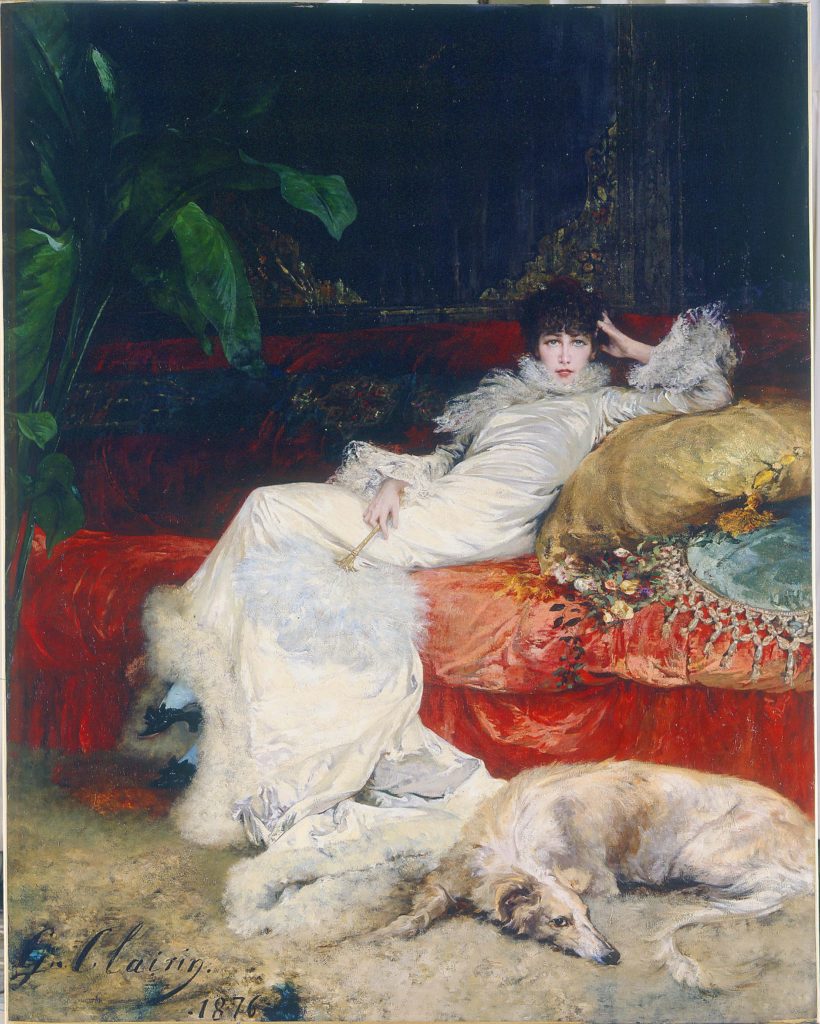
Petit Palais, Paris
She was born from a seamstress and her grandfather was a fair stallholder. As a child, Bernhardt was left out by her mother who preferred getting acquainted with Parisian fashionable society. As for her father’s identity, it has always been kept a secret. Sarah Bernhardt grew up in Brittany, raised by her nanny. From a very young age, she was renowned for her eccentric behaviour; she jumped by the window when her aunt paid a visit, in order to exhort her to be brought back to Paris.
She made her stage debut while staying at the convent, and played the part of an angel in a religious show. She left the orders aged 14 to take the entrance exam to a school of performing arts, and passed it with flying colours.
success
In 1862, with the Duke of Morny (her aunt’s lover) as her referee, she got into the Comedie Française – the most prestigious public drama academy of the country. Her first performance was in Iphigenia, a tragedy in verse by Racine. However, she was fired a little after for having slapped another female member and rival. Then, she became a famous demi-mondaine and newspapers capitalised on her scandalous affairs.
Sarah Bernhardt made a deal with the Odeon Theatre, as long as she’d “keep quiet”. Victor Hugo absolutely loved her starring as his protagonist, the Queen, on stage. So much, in fact, that he christened her “Golden Voice” at the party celebrating the hundredth Ruy Blas performance. She was then called back by the Comedie Française. Her portrayals of Phedre‘s eponymous character by Racine and Doña Sol in Hugo’s Hernani received overwhelming praise.
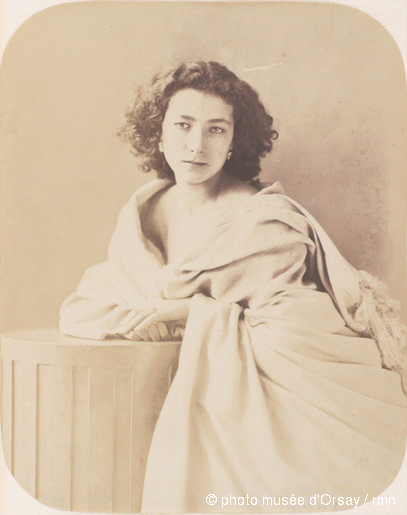
Félix Nadar, Sarah Bernhardt, v.1859
Albumen print from a
collodion glass negative
21.6 x 17.2 cm, Musée d’Orsay
Sarah Bernhardt as Doña Maria
(in Ruy Blas by Victor Hugo), 1872
Source: Gallica
In 1880, she created her own cast and started performing abroad, something she’ll keep doing til 1917. Sarah Bernhardt invented the concept of the live tour and the star-system. She’s the first ever person to have had her act on various continents. Indeed, she’s one of the few French people honoured with a star on the Hollywood Walk of Fame. Playwright Jean Cocteau used the phrase ‘sacred monster’ to describe her.
Her good friend Oscar Wilde was commissioned to write Salome for her; she portrayed its main role in 1892. She also played in male drag and was Edmond Rostand’s source of inspiration for The Eaglet, a story based on the life of Napoleon 1st’s son that Bernhardt impersonated. In 1893, she became manager of the Theatre de la Renaissance, where she staged the performances that made her fame (Phedre, The Lady of the Camellias by Alexandre Dumas, Lorenzaccio by Musset). As a whole, she played in more than 120 shows. She witnessed the birth of cinema, featuring on screen quite a few times.
Repertoire
Sarah Bernhardt was remembered for her bombastic stances and high-flown diction. Her formal acting style was characterised by dramatic body language and presence.
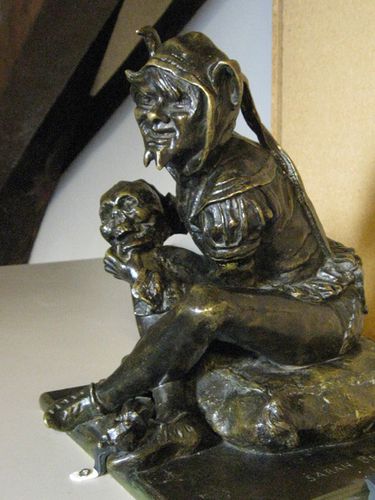
Sarah Bernhardt, Fool and Death, 1877
Bronze, 33 x 31 x 28.5 cm
Petit Palais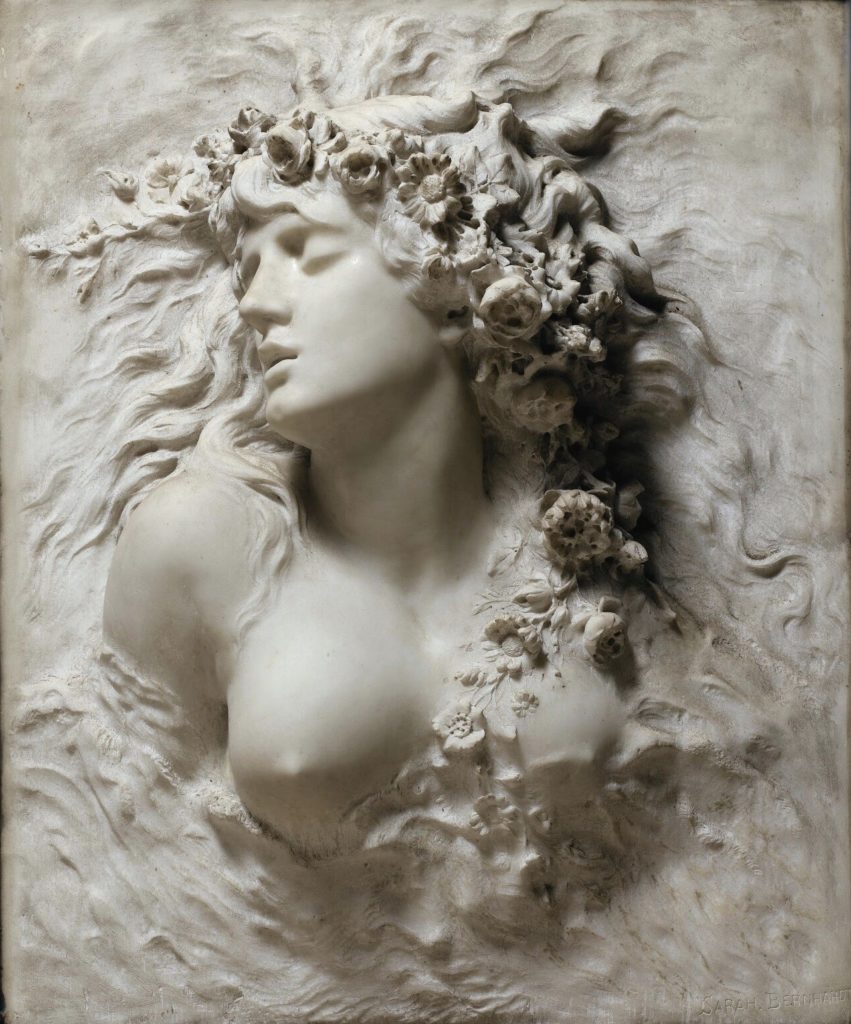
Sarah Bernhardt, Ophelia, 1880
Marbre, 59 x 70 cm
Private collection
During her teens, the Duke of Morny gave her the opportunity to attend art classes. After the Franco-Prussian war and its following economic crisis, she completed her education at the Julian Academy. She learned about carving and oil painting by studying anatomy. She developed her practice by entering the workshops of Roland Mathieu-Meusnier et Jules Franceschi.
First drawn by naturalism (After the Storm, 1876), her sculpture influenced by symbolism went darker in technique and contents. Through Fool and Death, she came back to her first love: drama. This bronze depicts the hero of The King Amuses Himself, Triboulet. In this Romantic play by Hugo, Triboulet is a cruel, misshapen creature, transforming the king into a dissolute lecherer.
Sarah Bernhardt exhibited her production at the Salon from 1874 to 1897, which didn’t go unnoticed by critics. Her Death and the Maiden was described as “a promise, more than a result” by Emile Zola in 1880. She showed a sculptured dagger entitled Weeds at the World Fair of 1900. Working on bronze, terracotta and marble, her fluid outlines and its floral imagery recalled the Art Nouveau style. She tried her hand at diverse genres and format, from monumental statues to small decorative statuettes.
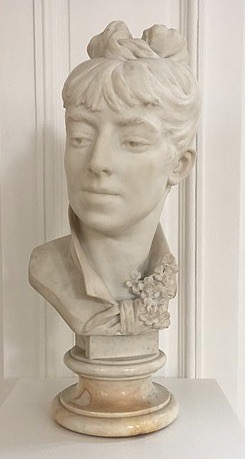
Sarah Bernhardt, Louise Abbema 1878, marble
42 x 27 x 22 cm, Musée d’Orsay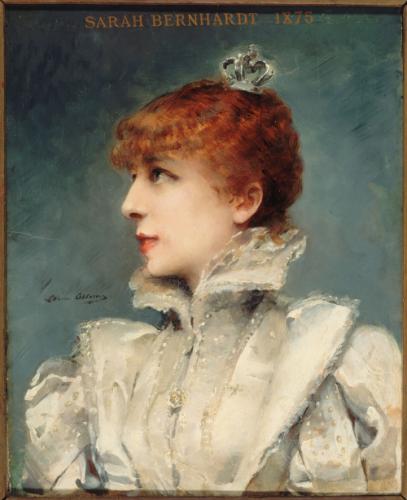
Louise Abbema, Portrait of Sarah Bernhardt in the role of Marie of Neubourg, v.1883
Oil on wood
Musée Carnavalet, Paris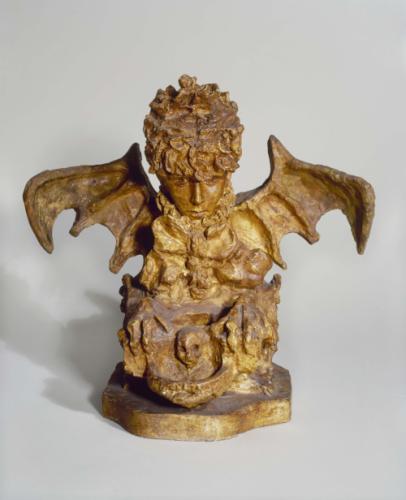
Sarah Bernhardt, Self-portrait as a Bat, coloured plaster
32 x 27 x 34.5 cm
Musée Carnavalet
Sarah Bernhardt represented members of her artistic circle, as in this bust of painter Louise Abbéma. She treated allegorical themes, giving way to curious montages. In this sense, Self-Portrait as a Bat, a fantasy subject, is quite exemplary. It it her most well-known, most reproduced sculpture. About forty works by her hand are known but many have been lost: http://traduction.culture.gouv.fr/url/Result.aspx?to=en&url=https://www.culture.gouv.fr/Sites-thematiques/Musees/Nos-musees/Valorisation-des-collections/Les-femmes-artistes-sortent-de-leur-reserve/Icones/Bernhardt-Sarah
public persona
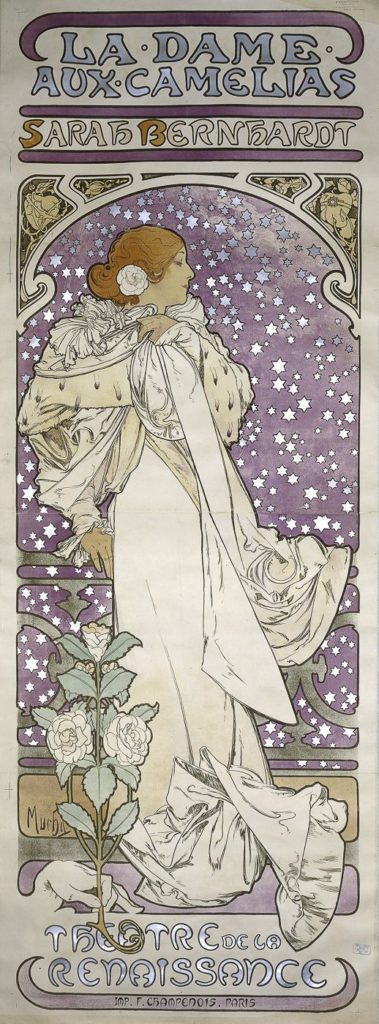
Anxious to control her own image, the actress elected George Clairin and Louise Abbéma to make her official portraits. As a fierce business-woman, Sarah Bernhardt’s name became a brand, appearing alongside consumer’s goods. Her personal style inspired fashion and beauty products. From 1894 on, she asked Alphonse Mucha to design all her promotional posters.
On 9 decembre 1896, a day celebrating the actress was set up by personalities from the artworld, including painters who have represented her, such as Antonio de la Gandara.
Sarah Bernhardt often took part in French political life and public debate, displaying quite liberal positions. She was also against death penalty. In 1914, she got awarded with the Legion of Honnor.
Rumour had it that she slept in a coffin. Bernhardt actually acted on this so-called scandalous habit to be photographed as such, spreading the image in the media. Since 1887, she suffered from tuberculosis but still performed, on a chair, after having her leg cut off. When she died, she was granted a national funeral. She was the first French woman to receive this type of tribute.
Sarah Bernhardt is buried in the Père Lachaise Cemetery and features on our Cemetery tour way: womensarttours.com/visite/ghosts-of-women-past-in-the-pere-lachaise/
